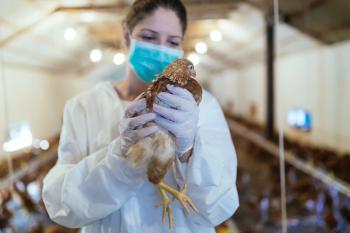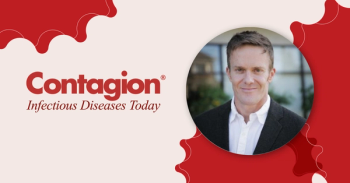
The Relationship Between Clinicians and Twitter
John Nosta, BA: I’m interested in understanding a bit more about your colleagues’ reactions to Twitter. All the time, I hear, “Twitter? I don’t want to do that.” It’s almost like appropriate use of Twitter—appropriate use of antibiotics.
Debra A. Goff, PharmD, FCCP: We have an infectious disease conference every Wednesday. This is when our physicians and infectious disease pharmacists present interesting cases. Maybe a patient is still in our hospital with a case that is complex. We want everybody to kind of weigh in on how to manage the patient. So during one of these conferences I said, “I’d like to present a topic discussion called Twitter.” If only I could describe the reactions. “Are you serious?” I’m like, “No, no, no, this is serious. I’m not kidding.” Let’s just say that this was not real well received. They were like, “Wow.” When you don’t understand something and you don’t see any value in it, what do you do?
John Nosta, BA: Exactly.
Debra A. Goff, PharmD, FCCP: You just go, “No.”
John Nosta, BA: Yes.
Debra A. Goff, PharmD, FCCP: And most infectious disease clinicians [who] I try to share the value of Twitter with see it as another email. We’re so inundated with emails. I can barely keep up with them. And so, who wants another email to deal with? You can’t even keep track of the ones you’ve got. So I say, “Trust me, it is not email.” And they ask me, “Debbie, how do you find time to do this?”
John Nosta, BA: Sure.
Debra A. Goff, PharmD, FCCP: And I say, “You know, you always find time for the things in your life that are valuable.”
John Nosta, BA: So with that thought, you said something earlier that I think is extraordinary and very powerful. The first is the value of a tweet and the power of an idea. And then, the utility of Twitter as a search engine. We’ve talked about that a lot. That’s a big area. I try to get that to be the cognitive tipping point, to get people to embrace Twitter, so they know how to use it.
Debra A. Goff, PharmD, FCCP: So that’s not well understood. Explain that in more detail.
John Nosta, BA: People say, “I have nothing to say.” That’s the first thing I hear.
Debra A. Goff, PharmD, FCCP: Yes, I hear that too.
John Nosta, BA: “I have nothing to say. [Whom] do I tweet to?” And then, “I’ve got no followers,” which is worse. It’s almost embarrassing.
Debra A. Goff, PharmD, FCCP: I felt that way.
John Nosta, BA: “I have no followers.” I want to know what’s going on in the world now, whether I’m at IDWeek or AHA [American Heart Association]. AHA is going on right now. What a wealth of information—if you want to follow some of the cardiology tweeters or just the AHA hashtag. We’ll talk a bit more about what a hashtag is and how to use it. To me, I know what’s going on in the world right now. If I google “AHA,” I’m going to get nonsense. I’m just going to get reams and reams of data that I can’t make heads or tails of. If I hashtag “AHA,” I know what’s going on right now and can even prioritize my search by not only what’s happening now but what the top-trending tweet [is]. I know they’re talking about X or Y. So for me, that is one of the most valuable tools. It’s a search engine. If you use Google, you should be using Twitter.
Debra A. Goff, PharmD, FCCP: World Antibiotic Awareness Week is in November. The stewards around the world are trying to reach people. The most useful vehicle is Twitter. The Centers for Disease Control [and Prevention (CDC)] is on it, as well as the Society of Infectious Disease Pharmacists, the Infectious Diseases Society of America, and the European groups. People around the world have a coordinated effort around a hashtag.
John, you’re right. If you want to become involved in Antibiotic Awareness Week.… And, oh my goodness, the CDC does an amazing job. They have educational professional artists designing posters that any doctor could put in their office, and that’s hopefully what they’re doing. I don’t have time to design that stuff, nor am I a graphic artist. They have professional people who are creating tools for us to use. You can hang them in your hospital. You can hang them in the health care clinic. We can’t forget about the veterinarians. We prescribe a lot of antibiotics to animals. While that is a whole other story, it’s a coordinated effort around the world. How many efforts take place around the world that are coordinated?
John Nosta, BA: So interestingly, you refer to Twitter as knowing what’s going on now.
Debra A. Goff, PharmD, FCCP: Right.
John Nosta, BA: I also find Twitter to be an amazingly quick analysis of what’s going on now. I don’t need to spend a lot of time on Twitter. Through a couple of trending tweets and a couple of big ideas, I get a sense of what’s going on in a specific category.
Debra A. Goff, PharmD, FCCP: Well, it reveals a lot. If we’re on World Antibiotic Awareness Week, part of what we’re looking at is, who are we engaging with? Are we preaching to the choir? Are we tweeting to [one another]? Are we actually reaching consumers, patients, the noninfectious disease experts, surgeons, hospitalists, and critical care physicians? I have a strategy for how I tweet. You can tweet and say, “Well, who’s reading this?” And, “I don’t know.” But if I include you in my tweet, I know if you feel that what I tweeted to you was important and provided value if I see you tweet it to your network of people. You reach a huge amount of people.
John Nosta, BA: That’s the power of the retweet.
Debra A. Goff, PharmD, FCCP: By knowing you, I now reach a whole different avenue of people, and a lot of them are not in health care. That’s exactly who we’re trying to reach, and you’re the one who has that voice.
John Nosta, BA: I don’t want to use the word private, but there is a private dialogue offered through Twitter. You tweet something, include me, and include a few other people. This becomes almost a dialogue among us.
Debra A. Goff, PharmD, FCCP: Yes.
John Nosta, BA: But the point is not only to educate us but to provide the basis for broad-based dissemination. I’m honored to be followed by someone like Mark Cuban. You know, I have millions, tens of millions of followers. John Sculley from Apple follows me. You know, interesting people [who] you can…
Debra A. Goff, PharmD, FCCP: So your circle is totally different [from] mine.
John Nosta, BA: Yes.
Debra A. Goff, PharmD, FCCP: But imagine that I tweet something really responsible about, let’s say, [an] MRSA infection. That’s methicillin-resistant Staphylococcus (Staph) aureus. You know, anybody can get that. You may cut yourself. Staph is on our skin. You can get an infection with MRSA, and there are only a handful of effective antibiotics to treat it. So let’s say I tweet something about that, and Mark Cuban’s son happens to have MRSA.
John Nosta, BA: Exactly, and all of the athletes he is connected to.
Debra A. Goff, PharmD, FCCP: Exactly. Athletes get MRSA [methicillin-resistant Staphylococcus aureus]. We can name so many athletes—football players, basketball players—whose careers have been ended because of MRSA infections, or they were certainly sidelined. All of a sudden, Mark Cuban, [whom I have] never met and don’t know, might retweet my tweet because it’s personal to him. His best player got sidelined [because of] MRSA. There’s a personal connection now. I probably would never have him retweet it, but I tweet it to you, [whom] he has that personal connection with. That’s so powerful.
John Nosta, BA: There are networks, broad-based networks, but there are also clusters of tweeters—people who know [one another]. I’ll often ask for people to retweet things. I’ll say, “This is important. Please retweet this.” They may not be an expert, but they may have a really interesting audience. So it’s really the diffusion of innovations, and the diffusion of timely…
Debra A. Goff, PharmD, FCCP: I love the fact that people don’t think the topic of antibiotic resistance is important to them because they’ve never had an infection. I tell them, “I’m going to guarantee that if it’s not you, it’ll be a family member—your grandparent, your parent, or your child. Then this topic’s going to become personal.” When your loved one is in the hospital and does not have an effective antibiotic because we’ve overused them and none of them work, you’re like, “What do you mean there’s nothing to treat them with?” You know, that’s kind of the mind-set of cancer. Society values cancer because everybody feels sorry for somebody with cancer because we know the outcome. Cancer is generally going to come back. In many scenarios, there’s nothing to treat it with.
And so, we want all of the stops pulled out. But in infectious disease, society doesn’t have that perspective. There is not that value. It’s like, “Oh, there will always be antibiotics. Antibiotics treat everything.” When I see a patient, sometimes it [is] as simple as a 23-year-old college student at [The] Ohio State [University] who is coming in with her first urinary tract infection. This isn’t grandma who is age 95 with 20 different diseases and is dying in a nursing home. This is a 23-year-old who has never even been in a hospital. I have to tell the patient, “We actually have no oral effective agents to treat you with, so we’ve got to admit you to get IV [intravenous] therapy.”
John Nosta, BA: Wow.
Debra A. Goff, PharmD, FCCP: You should see the look on their face. And then their parents are going, “What? How did my daughter get this?” That’s the moment we’re living in right now. And so, to me, Twitter provides me a voice to get that story out there. You are a vehicle to help me spread that story.
John Nosta, BA: Yes. You talk about our connections to cancer. Almost 1 in 3 are touched with cancer, either personally or through family. Who has not had a course of an antibiotic?
Debra A. Goff, PharmD, FCCP: Yes.
John Nosta, BA: That’s the 1 drug that touches all of our lives.
Debra A. Goff, PharmD, FCCP: Absolutely.
John Nosta, BA: From a beta-lactam to complicated C diff infections. I mean, they’re rich in emotion.
Debra A. Goff, PharmD, FCCP: For decades, the biggest challenge in my field was keeping up with all of the new antibiotics. There was 1 every 2 months. It seemed like there was a new cephalosporin every day.
John Nosta, BA: Well, that certainly slowed down.
Debra A. Goff, PharmD, FCCP: That was a challenge early in my career—trying to keep up with every new antibiotic. Pharma is a smart business and bacteria are real smart. You know, bacteria live to mutate and overcome antibiotics. That’s their sole purpose. The minute you start using an antibiotic and expose the bacteria to that antibiotic, they’re sitting there going, “OK, we’ve got to fight this. This is a new class.”
John Nosta, BA: Exactly.
Debra A. Goff, PharmD, FCCP: You get the idea. It’s like their job is to finish fighting antibiotics and mutating. So pharmaceutical companies quickly realized that this class of drugs, from a business perspective, is not a smart class to discover. As fast as they get them out to market, they render useless [because of] antibiotic resistance.
John Nosta, BA: That’s true.
Debra A. Goff, PharmD, FCCP: It’s a very complex problem. So bacteria are smart and they’re doing their job. They’re resisting antibiotics.
Newsletter
Stay ahead of emerging infectious disease threats with expert insights and breaking research. Subscribe now to get updates delivered straight to your inbox.

















































































































































































































































































